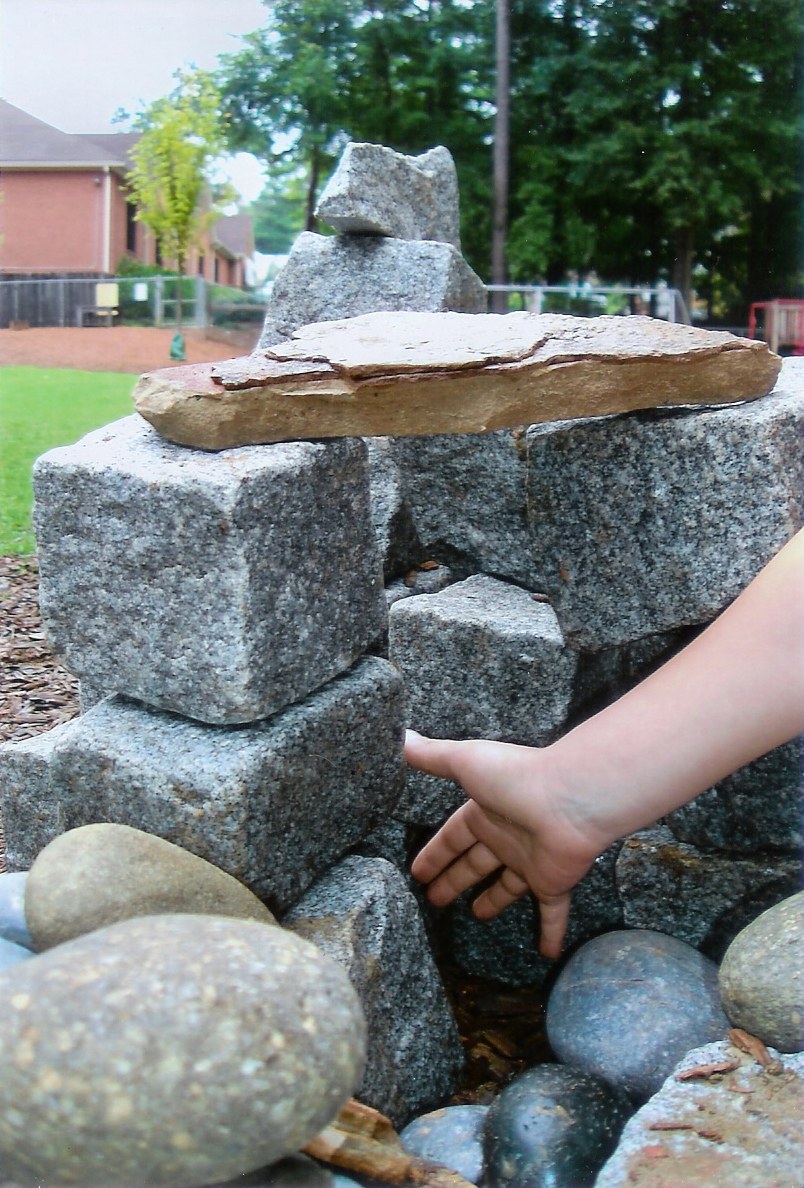Consider the descriptions associated with the word structure: arrange, organize, construct, and form. These words describe the actions we often see children doing and enjoying.

Structure, by definition, is the action of building or constructing something or arranging in a definite pattern of organization.
Children naturally create structures. We see clear examples of this when children are in outdoor environments or when they are given interesting, loose materials to work with. Children are inspired to find out how the materials can be used. They may line up sticks, arrange rocks, build mini-forts, or create clever combinations of materials. The material, space, and ideas act as encouragement; structures are created: big, small, and otherwise!
Think outside the blocks
A common structure familiar to early educators might be a block tower or building, but the term structures invites more meaning than just block buildings. Structures may surface in many areas of an early childhood program. You may see structures in the block area, art areas (sculptures, collages), dramatic play (tents, tunnels), sand/water table (bridges), outside areas (forts), and even in food (stacked cheese cubes!).
Structures show relationship to children's developmental skills and age. A very young child may be developing skills to use materials, such as an infant grasping and mouthing blocks. Toddlers may attempt stacking and organizing materials. Preschoolers may draw and write plans to symbolize their ideas as well as use complex language in describing the structure, such as balance, weight, gravity, and symmetry.
Structures may also show clear connections to children's life experiences, such as a child creating a house, airport, or zoo. Others tap into fantasy and creativity, such as a fairy house, a dragon city, or the self-titled egg cooker-zoopty-doo-1166549 (as shown on the left after painting a portrait of her block structure).
Structures: The adult's role
"As you provide opportunities for children to explore building materials, and guide them in their development of science inquiry skills, you will also see growth in language, literacy, mathematics, and social skills as well as in children's approaches to learning." - Ingrid Chalufour and Karen Worth, Building Structures with Young Children
The adult's role in helping to build structures will consist of providing materials, conversations, observation, and environments. Fill spaces with interesting, safe, and developmentally appropriate materials to structure with. Choose areas where materials can be explored freely with enough space to work comfortably in. Invite discussions about the materials and model structure vocabulary (heavy, light, base, foundation, wobbly, sturdy, balance, pattern, symmetry, design, and geometric shapes: square, rectangle, etc.).
When creating structures, children use prior knowledge, experience, and skills. Asking open-ended questions can help discover this information.
Programs that support broad concepts of structures, common or uncommon, will support children's natural curiosity and factors contributing to quality early education. The experience of creating structures sparks relationships, logical exploration, and application of developmental skills.
Structures allow children to work over periods of time and process ideas and strategies while participating in enjoyable experiences.
Possible structure materials
Base materials: floors, tables, trays, cardboard, mat boards, benches, chairs,
Building materials: blocks, cans, boxes, tubes (paper rolls, carpet rolls), wood, foam, wire, cardboard, large fabric pieces (blankets, sheets, etc.), plastic gutters, PVC-type pipes, hula hoops.
Natural materials: sticks, stumps, logs, rocks, pebbles, pine cones, leaves, water, dirt
Art materials: collage items: paper, glue cardboard, wood, straws, tape, paints, clay fabrics, string, yarn, pens, markers, crayons, and recycled materials such as egg cartons, paper tubes, lids, corks, plastic cups, etc.
Planning and extended structure work materials: paper, pencils, markers, cameras, recorders (voice, video), books, pictures, blueprints
References:
Chalufour, Ingrid, and Karen Worth. 2004. Building Structures with Young Children. Redleaf Press.
Tips 13-12

